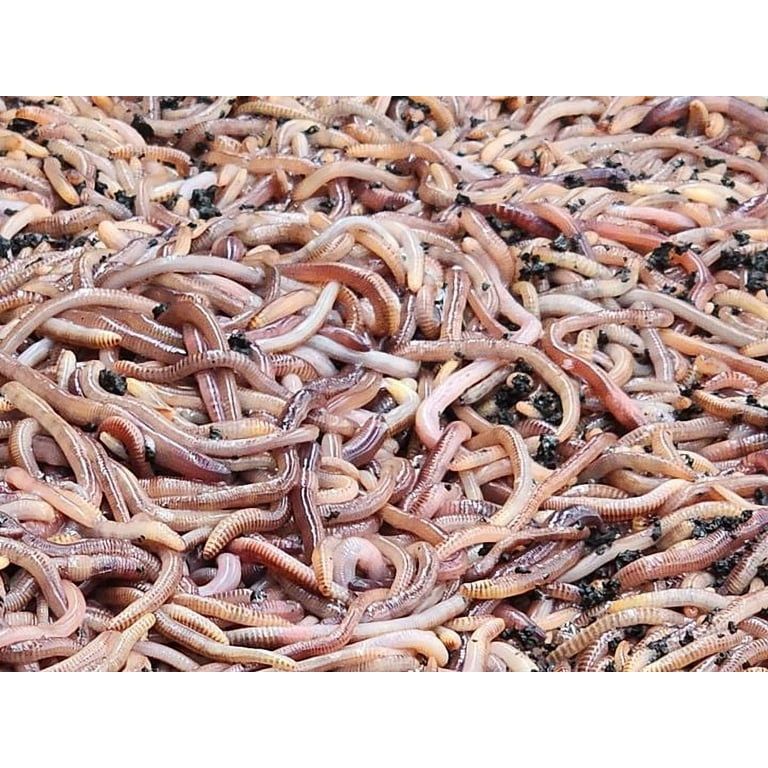Every Little Thing You Need to Know Regarding Red Wigglers for Composting
Red wigglers, or Eisenia fetida, play a critical role in the world of composting, changing natural waste into valuable dirt modifications. The process of setting up a worm bin and preserving it can present obstacles.
What Are Red Wigglers?

Native to North America, red wigglers are surface-dwelling microorganisms that favor moist, warm environments abundant in decaying natural issue. Their diet plan consists mainly of decaying plant material, food scraps, and various other natural particles, which they take in and break down efficiently. As they absorb this product, they create nutrient-rich castings that enhance dirt fertility.
Red wigglers are hermaphroditic, having both male and female reproductive organs, and can duplicate swiftly under optimum conditions. Generally, red wigglers are vital contributors to the procedure of recycling organic waste into important compost.
Advantages of Utilizing Red Wigglers
Making use of red wigglers in composting systems provides many benefits that enhance both the effectiveness of waste monitoring and the quality of the resulting compost. These worms, clinically called Eisenia fetida, are particularly efficient at damaging down organic matter, transforming kitchen area scraps and yard waste into nutrient-rich garden compost at an increased price.
Among the primary benefits of utilizing red wigglers is their capability to eat huge amounts of organic material, typically refining their weight in food waste daily. This high intake price leads to faster decay and minimizes the quantity of waste sent out to land fills. The spreadings generated by red wigglers are abundant in essential nutrients, beneficial microorganisms, and enzymes, making them an excellent fertilizer for yards and plants.
Additionally, red wigglers thrive in a variety of environments, making them versatile for both interior and exterior composting systems - red wigglers. Their existence in a compost bin helps to freshen the product, protecting against smells and advertising a healthy composting process. Overall, employing red wigglers not just adds to efficient waste administration however likewise supports sustainable gardening techniques via the production of premium compost
Establishing Your Worm Container
To efficiently set up a worm bin, it is vital to pick an appropriate container that satisfies the requirements of red wigglers while giving a conducive environment for composting. An appropriate bin can be made from plastic, timber, or steel, with an ability of at least 1 square foot for every pound of worms.
Guarantee the container has appropriate water drainage openings to protect against excess moisture, as red wigglers thrive in a damp, but not waterlogged, atmosphere. red wigglers. The bin ought to also be ventilated to offer adequate air flow, stopping anaerobic problems that might hurt the worms
A suitable place for the worm bin is an amazing, dark area, complimentary from direct sunlight and extreme temperatures, as red wigglers prefer a temperature level series of 55 to 77 levels Fahrenheit.
Before introducing the worms, prepare bedding products such as shredded paper, cardboard, or coconut coir, which will certainly offer both habitat and food. Dampen the bed linens gently to produce an inviting environment for the worms. Finally, think about putting a lid on the container to keep humidity and decrease pests, while guaranteeing it can be quickly eliminated for maintenance.
Feeding and Treatment Standards
Feeding red wigglers is an important aspect of keeping a healthy composting system. These worms thrive on a varied diet, largely made up of organic products such as vegetables and fruit scraps, coffee grounds, and crushed eggshells. It is important to stay clear of feeding them meat, dairy products, and oily foods, as these can create undesirable odors and bring in insects.
When presenting food to your worm bin, cut or shred materials right into smaller items to facilitate quicker disintegration. Start with tiny quantities to determine the worms' consumption price, progressively boosting the amount as they adapt. It is suggested to alternating feeding areas within the bin to motivate comprehensive blending and oygenation of the compost.

Troubleshooting Common Issues
Keeping a prospering worm composting system can occasionally offer obstacles that call for interest and troubleshooting. Typical problems include an unpleasant odor, which often suggests overfeeding or the presence of anaerobic conditions. To remedy this, reduce the amount of food included and guarantee proper oygenation by blending the bed linen material.
Another constant trouble is the getaway of worms from the bin. This can take place because of extreme moisture or improper ecological conditions. Routinely check the dampness levels, aiming for a wet however not soaked uniformity, and preserve optimum temperature levels between 60-80 ° F(15-27 ° C )to develop a comfortable habitat for your red wigglers.
Parasites, such as fruit flies, can likewise attack worm containers. red wigglers. To combat this, cover food scraps with a layer of bed linens or shredded paper to discourage flies from laying eggs. Additionally, make certain that any type of food included is fresh and without mold, which can link draw in unwanted parasites
Finally, if your worms appear inactive, examine for tension factors such as temperature variations or insufficient dampness. Dealing with these usual problems will certainly aid keep a healthy and balanced and effective worm composting system.
Verdict
In summary, red wigglers, or Eisenia fetida, play a vital duty in lasting waste management via vermicomposting. Correct configuration and upkeep of a worm container, along with adherence to feeding standards, ensure a thriving community that reduces garbage dump payments.
Comments on “Great red worms: How they improve soil”